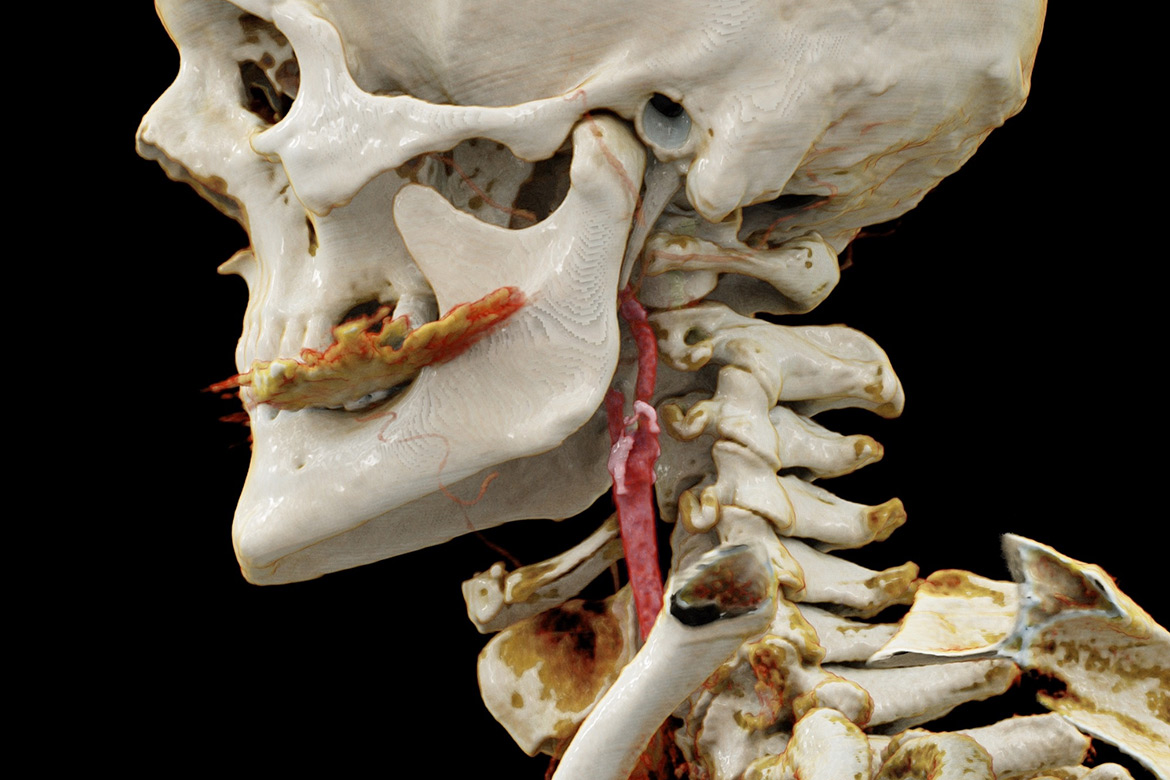ANATOMY
Digitising the carotid artery
A computer simulation hopes to prevent unnecessary, risky surgery on the carotid artery in future.

Is surgery necessary? This digital model of the carotid artery could help doctors make the right decision. | Image: L. Dubs et al. (2023)
When the internal carotid artery narrows, doctors often find themselves faced with a difficult decision as to whether they should widen the blood vessel – maybe by inserting a stent – so that enough blood reaches the brain. Such interventions are risky, because a blood clot might detach itself and block the bloodstream, for example. A new method could soon help doctors to assess better whether or not an intervention is actually necessary.
Doctors frequently discover this narrowing of the artery by chance, without the person concerned having suffered any symptoms. “The degree of narrowing of the blood vessel cannot tell us to what degree there might be a disturbance in the blood flow”, says Vartan Kurtcuoglu of the University of Zurich. This is why, in a pilot study carried out in collaboration with the Zurich University Hospital, he and his team have conducted computer simulations of blood flow.
To do this, they took the data of 37 affected people whose carotid arteries had already been examined carefully using both Doppler ultrasound (to measure the speed of the blood flow) and computer tomography (to provide information on their anatomy). The resulting digital ‘twin’ simulated how the pressure differed, both before and after the narrowed area of the internal carotid artery, so that they might detect any impairment in the flow of blood.
The results were found to be reliable when compared with other ultrasound data. “But it will be some time before these simulations will let us make recommendations for or against surgery”, says Kurtcuoglu.




